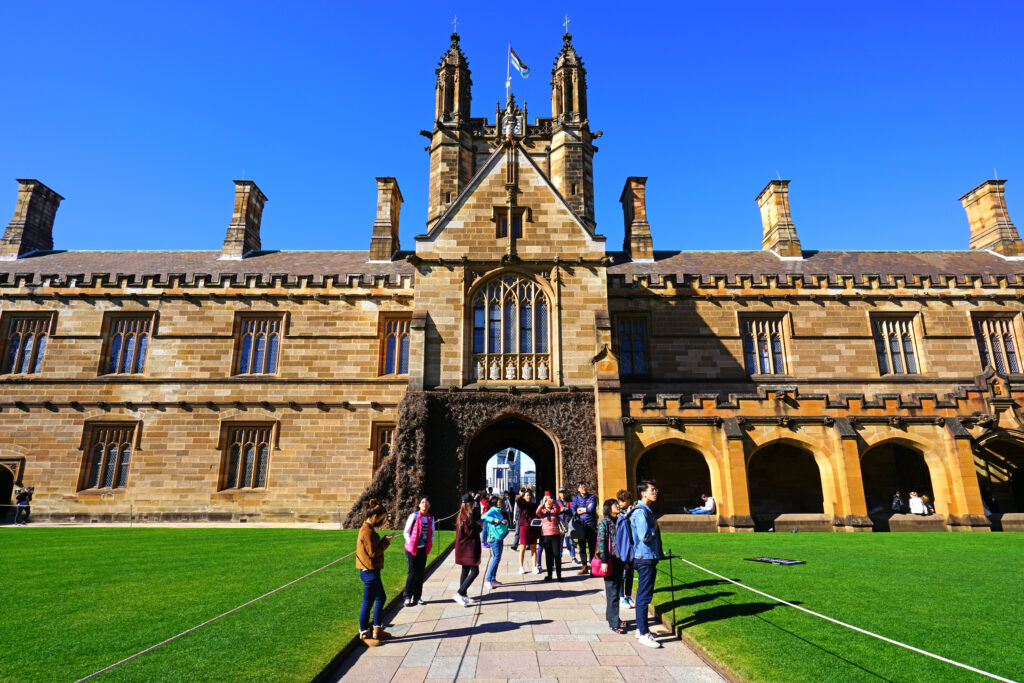So, your university ranks in the “top 200 in the world”. What does this actually mean? Does this actually make your university ‘better’ than other universities? And why are Australian university rankings so controversial?
For some people, the ‘ranking’ that a university has can be really influential when it comes to choosing where they want to do their tertiary studies. However, there is a range of different ranking tables that all measure different things, meaning a university that ranks higher on one may rank lower on another.
When looking at university rankings, you need to understand exactly which indicators these universities are being measured against, while keeping in mind what is most important to you as a student.
Let’s run through a history of university rankings and break down the specific measurements of three of the world’s most prestigious and influential rankings systems.
The history of university rankings
University rankings began in the 1980s, when entire countries and continents started using a number of indicators, such as academic reputation (usually based on subjective, peer-reviewed surveys), admission selections, and academic output and financial resources, to reflect and rank the quality of education providers.
Ranking universities on a global scale was the next logical step, with the increasing competition of the global economy and the growth in students traveling abroad to study. It was believed this would give governments the ability to assess the amount of funding they were giving institutions for their research compared to output. It would also help management at universities gain the support of their staff and the government for any strategic plans. For example, if a university was ranking highly, its ‘proven’ success could be a catalyst for people to support its future plans.
In 2003, the Academic Ranking of World Universities (ARWU) was the first to start benchmarking ‘world-class universities’, and evaluated universities on their research performance. The ARWU, the QS World University Rankings and the Times Higher Education (THE) World University Rankings are, to this day, the world’s most prestigious ranking providers. You’ve probably even checked to see where your university ranks on one of these.
The usefulness of university rankings has been long debated by various entities. To help you decide for yourself, let’s run through the top three global rankings and what their specific methodology is when it comes to judging a university’s quality.
Academic Ranking of World Universities (also known as the Shanghai Rankings)
The world’s first global rankings, the Academic Ranking of World Universities (ARWU), focuses its ranking on research excellence. It considers every university in the world that has any Nobel Laureates, Fields Medalists, Highly Cited Researchers, or papers published in Nature or Science. As of 2022, ARWU has based its methodology on the following criteria and weights:
- Quality of Education – Alumni of an institution winning Nobel Prizes and Fields Medals – 10 per cent
- Quality of Faculty – Staff of an institution winning Nobel Prizes and Fields Medals – 20 per cent
- Quality of Faculty – Highly Cited Researchers – 20 per cent
- Research Output – Papers published in Nature and Science – 20 per cent
- Research Output – Papers indexed in Science Citation Index-Expanded and Social Science Citation Index – 20 per cent
- Per Capita Performance – Per capita academic performance of an institution – 10 per cent
The ARWU ranking can be scrutinised for leaning towards the natural sciences, research indicators, and emphasis on institutions that have been awarded Nobel Prizes, over other indicators such as the quality of teaching or graduate employability. However, if you are interested in undertaking high-quality research during your studies, a university that ranks highly on the ARWU may be perfect for you.
QS World University Rankings
The QS World University Rankings, which started in 2004, used to be published in the Times Higher Education (THE) magazine. Together, they were known as the Times Higher Education-QS World University rankings. In 2009, both publishers started to announce their own independent rankings. QS chose to continue using its existing methodology while THE adopted a new methodology. The eight metrics used by the QS Rankings are:
- Academic reputation
- Employer reputation
- Faculty/student ratio
- Citations per faculty
- International faculty ratio
- International student ratio
- International research network
- Employment outcomes
In comparison to the ARWU, the QS Rankings have been criticised previously for not taking into account the quality of research by institutions and instead focusing on reputation surveys, which are largely subjective. It, along with other ranking bodies, has also been critiqued for not considering graduate employment outcomes. Evidently, QS took this feedback seriously, having incorporated two new metrics in 2023: international research network and employment outcomes.
The QS Rankings do take into account specific subject rankings, which other rankings do not. As a student, the QS Rankings will give you an idea of the quality of a university between each of its faculties.
Read more:
- Which Australian Universities Made the Top 200 in the QS World University Rankings 2023?
-
The 2022 QS World University Rankings 2022 Are In! Where Does Your Uni Rank?
Times Higher Education World University Rankings
The Times Higher Education (THE) World University Rankings began in their current form in 2010, after separating from the QS Rankings. The rankings system uses 13 different performance indicators, grouped into five areas, to determine university rankings:
- Teaching (the learning environment)
- Research (volume, income and reputation)
- Citations (research influence)
- International outlook (staff, students and research)
- Industry income (knowledge transfer)
THE Rankings place a high importance on citations when assessing a university, a metric that some say is open to manipulation. THE Rankings also take into account institutional income, which can be a difficult indicator to measure, as many universities in European countries offer free higher education to their citizens. However, THE Rankings can also argue that they have one of the most comprehensive methodologies.
Read more: 6 Australian Universities Have Climbed in the Times Higher Education World Rankings
So, do rankings really matter?
That’s for you to decide! As an international student, think about what is most important to you. Is it how employable you will be after graduation? Is it the quality of research you’ll be able to do while you’re studying? Is it which city you want to study in? Does the university offer scholarships to international students? Maybe it’s even how big a university you want to attend, or whether that institution even teaches the course you want to take?
Some of these qualities are measured by rankings, while others are not. Although rankings do encourage universities worldwide to compare and improve themselves, which is a good thing, they should not be the sole reason that you choose a specific university. Put simply, when it comes to deciding which university you want to attend, you will need to research a lot more than just where a university sits on a specific rank.





